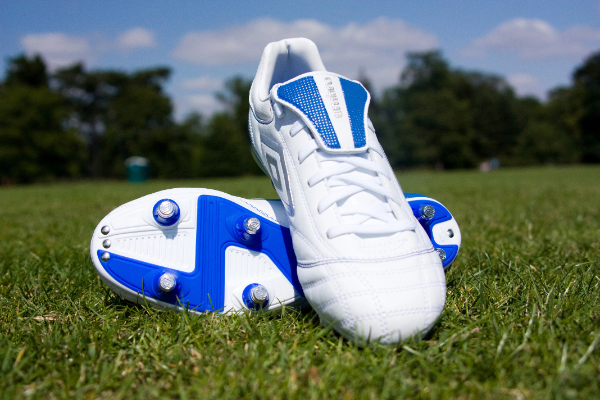When it comes to hiking, the right footwear can make or break your experience. In 2024, a variety of hiking shoes offer exceptional comfort, support, and durability. This guide will explore the best options available, focusing on essential features and top models.
Key Features to Consider
Comfort
Comfort is paramount for long hikes. Look for shoes with adequate cushioning and arch support. A snug fit helps prevent blisters. Insole technology, such as EVA foam or memory foam, can significantly enhance comfort.
Durability
Hiking shoes must withstand rough terrain. Materials like leather and synthetic fabrics enhance durability. Check for reinforced toe caps and heel counters for added protection against rocks and roots.
Traction
The outsole’s grip is crucial for stability on various surfaces. Vibram rubber outsoles are popular for their excellent traction. Deep lugs on the outsole provide additional grip on uneven ground.
Water Resistance
Waterproof shoes keep your feet dry in wet conditions. Gore-Tex is a trusted waterproof membrane that breathes well, allowing moisture to escape while preventing water from entering.
Breathability
Shoes with breathable materials prevent overheating. Look for mesh panels or moisture-wicking liners. This is especially important for warm-weather hiking.
SEE ALSO: The 7 Best Hiking Boots Under $100
Top Hiking Shoes of 2024
Merrell Moab 3
Overview: The Merrell Moab 3 is renowned for its comfort and durability.
Features: A cushioned insole, excellent arch support, and a Vibram outsole for reliable traction. The shoe is available in waterproof and non-waterproof versions.
Ideal For: Day hikes and moderate trails.
Salomon X Ultra 4
Overview: Lightweight and agile, perfect for dynamic hikers.
Features: Advanced Chassis for stability and a Contagrip outsole for superior grip. The Quicklace system allows for easy adjustments, even while on the move.
Ideal For: Technical terrain and variable weather conditions.
Hoka One One Sky Toa
Overview: Offers maximum cushioning for long-distance hikes.
Features: Plush midsole absorbs shock, rubber outsole provides good grip, and the lightweight design reduces fatigue.
Ideal For: Long hikes and backpacking trips.
Altra Lone Peak 7
Overview: Designed for natural foot movement and comfort.
Features: Wide toe box, Zero Drop platform promotes a natural stride, and excellent traction for both trail running and hiking.
Ideal For: Trail runners and minimalist hikers.
Lowa Renegade GTX Mid
Overview: A traditional hiking boot offering exceptional ankle support.
Features: Gore-Tex lining for waterproofing, Vibram outsole for stability, and a durable upper.
Ideal For: Backpacking and rugged terrain.
Columbia Trail Shock
Overview: A budget-friendly option that doesn’t compromise on quality.
Features: Lightweight design, cushioned midsole, and Omni-Grip outsole for reliable traction.
Ideal For: Casual hikers and beginners.
Choosing the Right Fit
Finding the right fit is essential. Here are some tips:
Try Before You Buy
Always try on shoes before purchasing. Walk around the store to test comfort and fit. If possible, hike a short distance in-store.
Consider Thickness of Socks
If you plan to wear thick hiking socks, account for that when choosing your size. This can prevent pinching and discomfort during hikes.
Check for Heel Lift
Your heel should not lift when walking. A secure fit prevents blisters and discomfort.
Room for Toes
Ensure there is about a thumb’s width of space between your longest toe and the front of the shoe. This allows for swelling during hikes.
Maintaining Your Hiking Shoes
To extend the life of your hiking shoes, follow these maintenance tips:
Clean Regularly
Remove dirt and mud after each hike. Use a soft brush and mild soap for cleaning, and avoid harsh chemicals that can degrade materials.
Air Dry
Always air dry shoes after use. Avoid direct sunlight and heat sources, as they can damage materials and cause shoes to warp.
Store Properly
Store shoes in a cool, dry place. Use shoe trees or stuff with newspaper to maintain shape. Consider keeping them in a breathable bag to avoid moisture build-up.
Additional Considerations
Terrain Type
Choose shoes based on the terrain you’ll be hiking. For rocky or technical trails, opt for shoes with stiffer soles. For smooth trails, a more flexible shoe might suffice.
Seasonal Use
Consider if you’ll need shoes for specific seasons. Some shoes are designed for winter conditions with added insulation and better grip on ice.
Weight
Lightweight shoes reduce fatigue but may offer less support. Heavier boots provide more protection but can be tiring on longer hikes.
Reviews and Recommendations
Research reviews from fellow hikers. Online forums and outdoor retail websites often provide insights and comparisons.
Conclusion
Choosing the best hiking shoes for 2024 involves understanding your needs and the features that matter most. From comfort and durability to traction and water resistance, there’s a perfect pair for everyone. Whether you’re hitting the trails for a day hike or embarking on a multi-day adventure, the right footwear will enhance your experience. Investing time in finding the right shoes will pay off in comfort and safety on the trails. Happy hiking!
Related topics:
- The 7 Best Walking Boots 2024
- The 7 Best Daypacks for Hiking in 2024
- The 10 Best Hiking Backpacks Under $100

